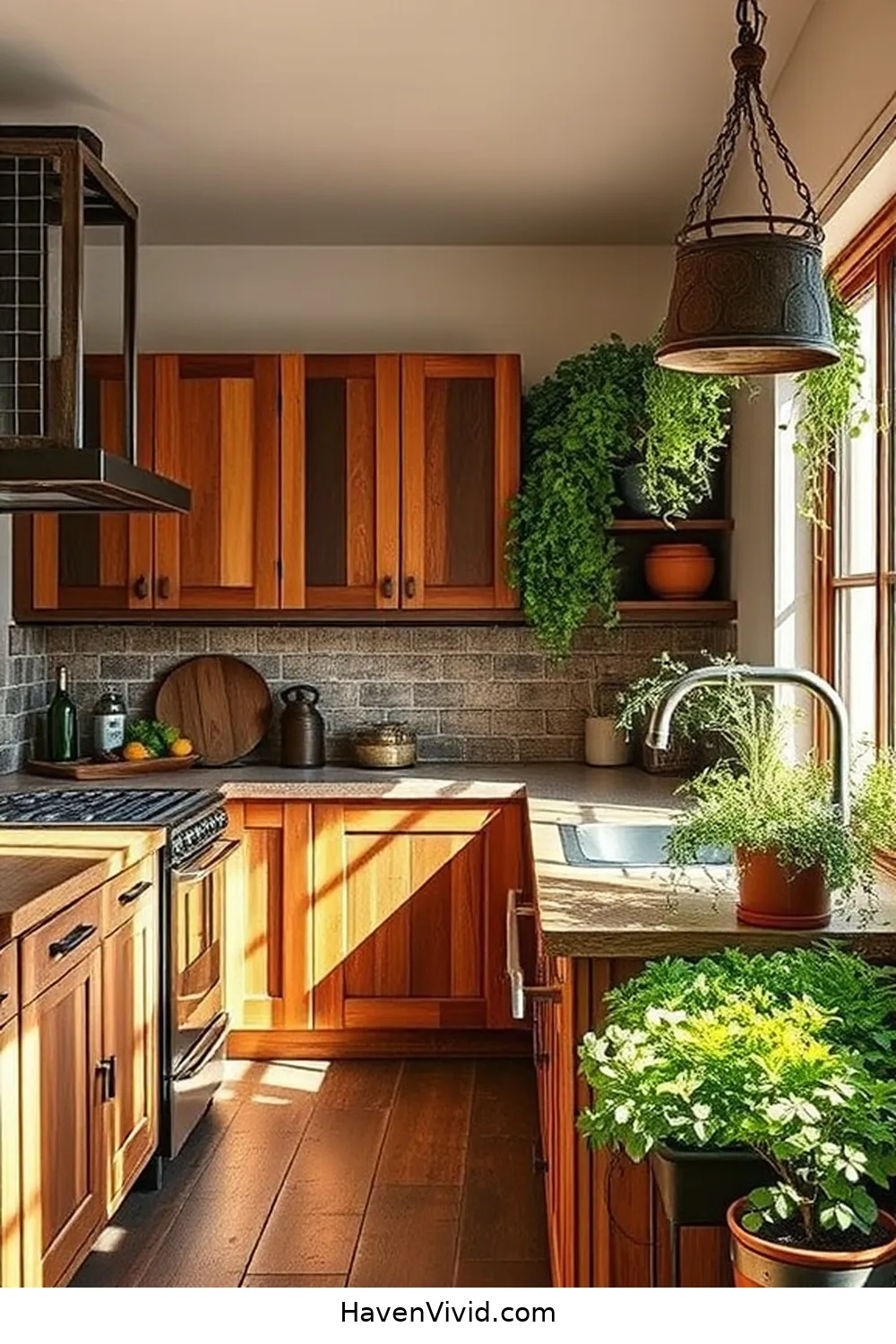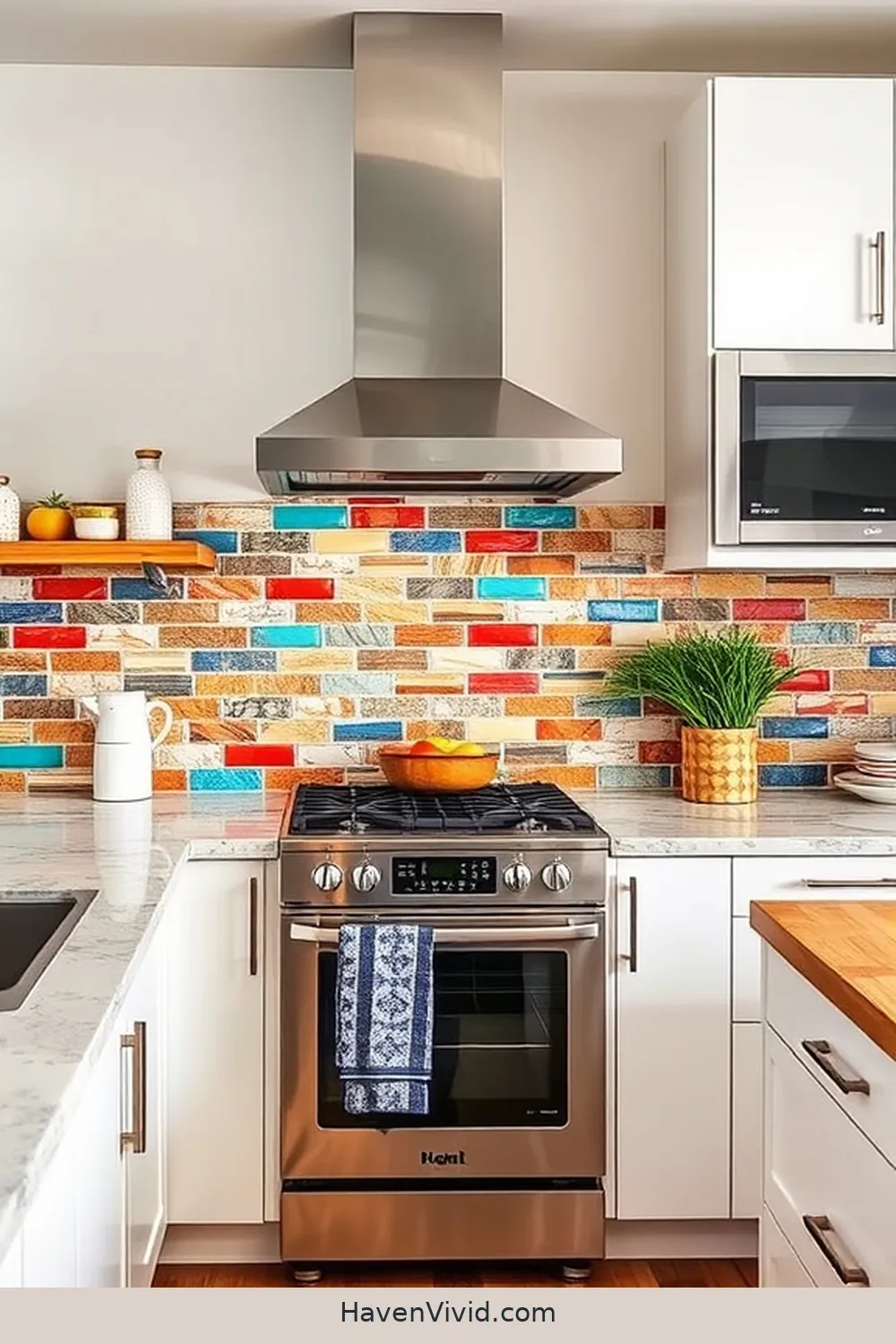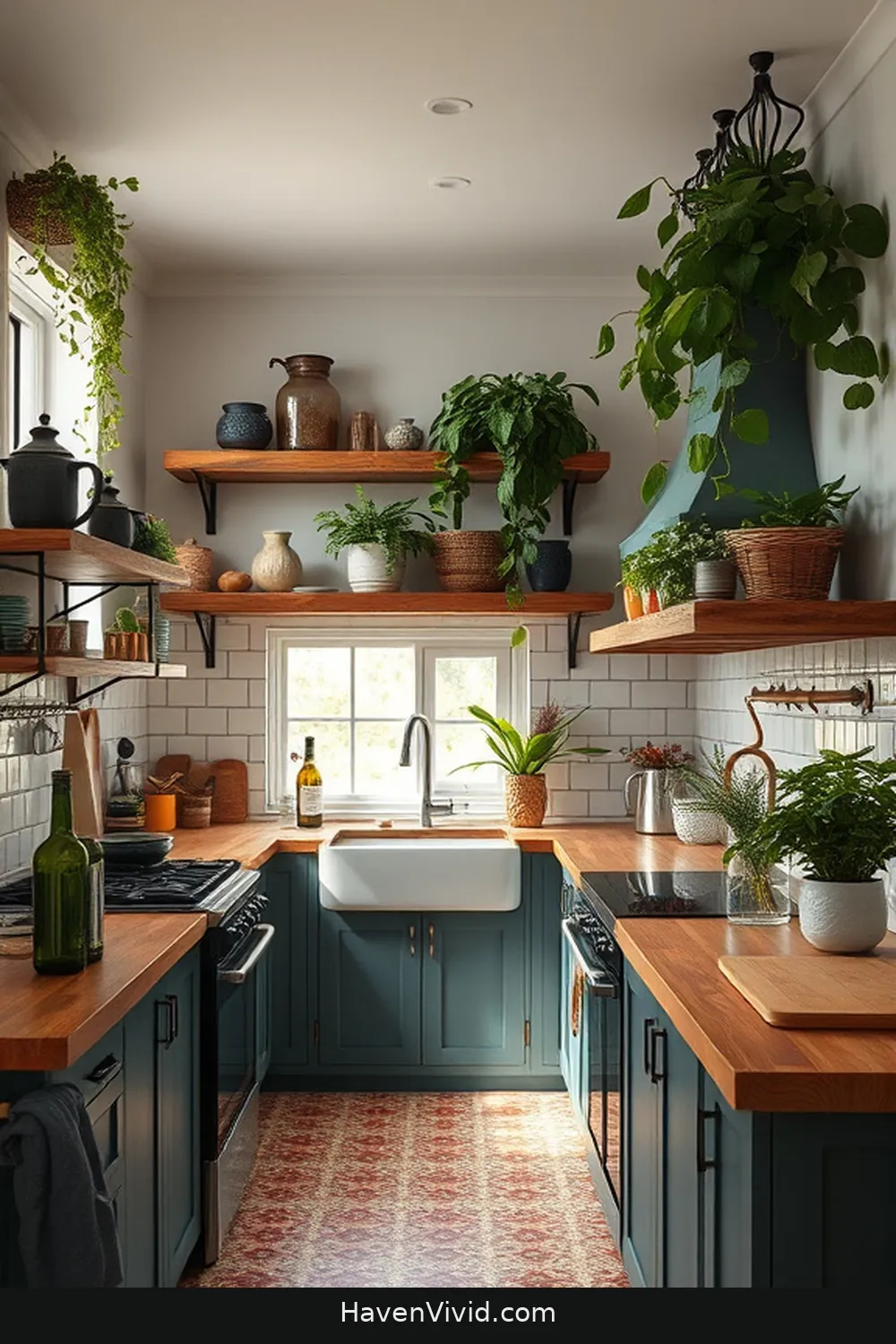This post may contain affiliate links. Please read our policy page.
I love creating artistic kitchen spaces by incorporating reclaimed materials that tell a story. By using unique reclaimed wood for countertops or vintage doors for cabinets, I add personality and sustainability. Salvaged materials like old bricks or glass bottles make stunning backsplashes that capture attention. Each piece not only reduces waste but also enhances the creativity of the design. If you’re curious about more ideas on how to transform your kitchen, there’s so much more to explore!
The Benefits of Using Reclaimed Materials in Kitchen Design

When I think about designing a kitchen, I can’t help but appreciate the unique charm that reclaimed materials bring to the table. Using salvaged wood, metal, or stone not only adds character but also tells a story, connecting my kitchen to its past.
I love knowing that my choices reduce waste and minimize the demand for new resources, which is essential for our planet. Each piece has its own history, and that authenticity inspires creativity in my design.
Plus, reclaimed materials often come with a durability that new products can’t match. By choosing them, I’m not just creating a beautiful space; I’m also embracing sustainability and resourcefulness, making my kitchen a true reflection of my values.
Recommended Items
Here are our recommended products and equipment to create your artistic kitchen space—feel free to explore!
Products
Creative Ideas for Reclaimed Wood Countertops

While I explore the world of kitchen design, reclaimed wood countertops consistently capture my imagination with their rustic elegance and sustainable appeal.
I love how they can transform a space while telling a story. Here are three creative ideas to contemplate:
- Mix and Match: Combine different wood species for a visually striking countertop that highlights the beauty of each piece.
- Live Edge Finishes: Embrace the natural contours of reclaimed wood, creating a unique, organic look that adds character to your kitchen.
- Stain and Seal: Experiment with eco-friendly stains and finishes that enhance the wood’s natural grain while protecting it from daily use.
These innovative approaches not only elevate your kitchen but also promote resourcefulness and environmental consciousness.
Transforming Cabinets With Vintage Doors

Transforming your kitchen cabinets with vintage doors can breathe new life into your space while embracing sustainability. I love the idea of sourcing old doors from flea markets or salvage yards, each telling its own story.
By carefully removing the old cabinet fronts and replacing them with these unique doors, I create a stunning focal point that’s both stylish and eco-friendly. You can mix and match different styles to create a charming eclectic look, or stick to a single design for a more cohesive feel.
Don’t forget to sand and refinish the doors—this not only enhances their beauty but also extends their life. With a little creativity, your kitchen can reflect your personality while minimizing waste.
Unique Backsplash Options From Salvaged Materials

As I explore unique backsplash options, I find that salvaged materials offer endless possibilities for creativity and sustainability.
Using reclaimed items not only enhances the kitchen’s aesthetic but also reduces waste.
Here are three standout options I’ve discovered:
- Old Bricks: These add a rustic charm, creating a warm, inviting atmosphere in any kitchen.
- Glass Bottles: Cut and arranged artistically, they can reflect light beautifully and introduce vibrant colors.
- Wood Scraps: Reclaimed wood planks provide a natural texture, perfect for a cozy, farmhouse-style kitchen.
Step-by-Step Guide to Artistic Kitchen Decor
Incorporating Upcycled Lighting Fixtures

After exploring unique backsplash options, I’m excited to share how upcycled lighting fixtures can elevate your kitchen’s design while staying true to eco-friendly principles.
Using reclaimed materials for lighting not only reduces waste but also adds a unique touch to your space. I love repurposing vintage glass jars as pendant lights or transforming old wooden crates into stylish ceiling fixtures. These creative choices spark conversation and infuse character into my kitchen.
When selecting upcycled fixtures, think about how they can complement your overall theme. A mix of textures and styles can create a warm, inviting atmosphere.
Plus, choosing energy-efficient bulbs guarantees that your eco-friendly efforts extend beyond aesthetics, making your kitchen not just beautiful, but sustainable, too.
Designing a Functional and Artistic Kitchen Layout

While I believe a kitchen should be both functional and artistic, achieving that balance requires thoughtful design.
I’ve found that focusing on a few key aspects can make a world of difference:
Focusing on key design aspects can transform your kitchen into a functional yet artistic space.
- Zoning: Create distinct areas for cooking, prep, and dining. This keeps everything organized and efficient, reducing clutter.
- Flow: Guarantee easy movement between zones. An open layout can enhance interaction while making the space feel larger and more inviting.
- Material Harmony: Use reclaimed materials that complement each other. Mixing textures and colors adds depth and character, making the kitchen a work of art.
Tips for Sourcing and Selecting Reclaimed Materials

Incorporating reclaimed materials into your kitchen not only enhances its artistic appeal but also contributes to sustainability.
To start sourcing, I recommend checking local salvage yards, where you can find everything from reclaimed wood to vintage tiles. Online marketplaces like Etsy or Facebook Marketplace can also be goldmines for unique pieces.
Don’t shy away from asking local contractors or builders; they might’ve leftover materials from previous projects.
When selecting, always consider the condition and authenticity of the materials. Look for signs of wear that add character but make sure they’re structurally sound.
Finally, trust your instinct—if a piece speaks to you, it’ll likely resonate in your kitchen design, creating a space that’s both beautiful and meaningful.











